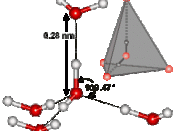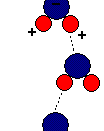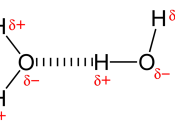Xylem is composed of a number of different types of cell, and may include long, thin, usually dead cells known as tracheids; fibres (schlerenchyma); thin-walled parenchyma cells; and conducting vessels.
The xylem vessel has two main functions:
* Xylem transports water and dissolved ions from the root system to the stem.
* The lignified thick-walled xylem cells strengthen the stem.
There are three theories in which the xylem vessel transports water around the plant:
Capillarity
Spontaneous movement of water up narrow xylem vessels. The movement is due to unbalanced molecular attraction at the boundary between the water and the vessel. the water molecules near the boundary are more strongly attracted to molecules in the material of the vessel than to other nearby water molecules, and so water will rise in the vessel. However this mechanism does not account for the greater distance that water can travel in trees.
Root pressure
This is caused by the mineral ions which are actively transported into xylem vessels in the root by endodermal cells. This makes the water potential of the xylem more negative and causes water to enter the xylem by osmosis. Some plants can produce a water potential gradient by actively transporting mineral ions to the top of the plant. The water potential on the top of the plant is much greater than the bottom of the plant, therefore the water moves up to the top. Even under optimal conditions, root pressure can only lift water a couple of feet.
Cohesion tension
The problem of how water moves upward in plants from roots to shoots is most extreme in the tallest trees, where distances to be traveled are the greatest. Some of the tallest trees are at least 120 metres tall. If a hypothesis or model can explain water movement...


